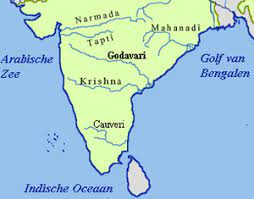Narmada and Tapti River are two important rivers in India, with significant historical, cultural, and ecological importance. These rivers originate in the central highlands of India and flow towards the west, emptying into the Arabian Sea.

Table of Contents
Narmada River
The Narmada River is the fifth-largest river in India, with a total length of about 1,312 km. It originates in the Amarkantak hills of Madhya Pradesh and flows through the states of Gujarat and Maharashtra before finally emptying into the Arabian Sea. The river is considered holy by Hindus and is revered as Narmada Ma or the “Mother Narmada.” The river basin is home to several ancient temples, pilgrimage sites, and cultural landmarks, such as the Maheshwar Fort and Omkareshwar temple.
The Narmada River is also an important source of irrigation and power generation for the region. The river is dammed at several locations, including the Sardar Sarovar Dam, which is one of the largest dams in the world. The dam provides irrigation water to millions of hectares of farmland and generates electricity for several states in India.
Tapti River
The Tapti River is a major river in Western India, with a total length of about 724 km. It originates in the Satpura Range of Madhya Pradesh and flows through the states of Maharashtra and Gujarat before finally emptying into the Arabian Sea. The Tapti River basin is an important agricultural region, known for its production of cotton, sugarcane, and other crops.
The Tapti River is also home to several species of fish, including the endangered Ganges River Dolphin. The river supports a diverse range of aquatic life and is an important source of livelihood for several communities that depend on fishing and other river-based activities.
Challenges faced by Narmada and Tapti River
In recent years, both the Narmada and Tapti rivers have faced several environmental challenges, such as pollution, deforestation, and unsustainable development. These issues have threatened the region’s delicate ecosystem, causing soil erosion, loss of biodiversity, and groundwater depletion. To address these challenges, several conservation initiatives have been undertaken by the government and non-governmental organizations to protect the region’s natural resources and promote sustainable development.
Conclusion
In conclusion, the Narmada and Tapti rivers are two important rivers in India that hold immense historical, cultural, and ecological importance. These rivers support a diverse range of flora and fauna, provide livelihoods to several communities, and are a source of irrigation, power generation, and tourism. However, the rivers also face several environmental challenges that require urgent attention to ensure their long-term sustainability.
Important Links